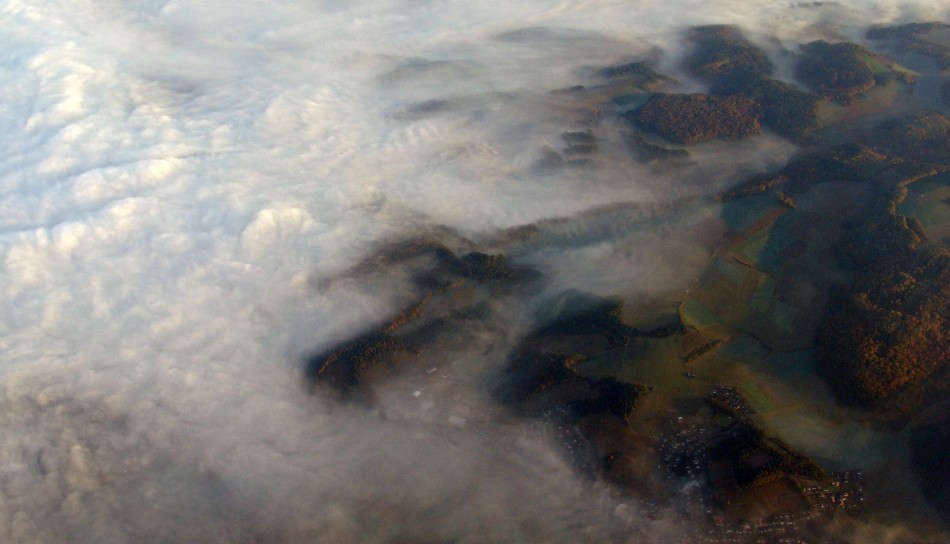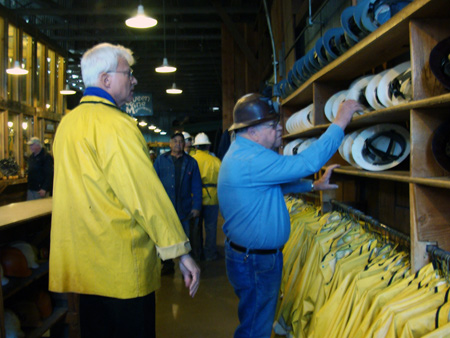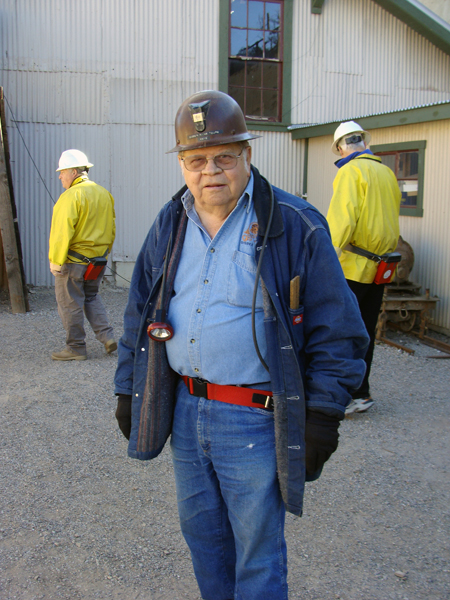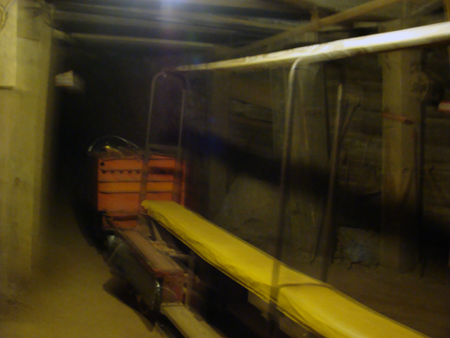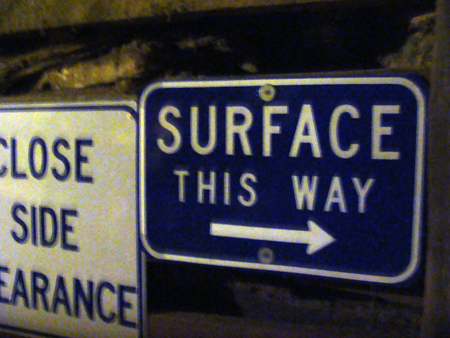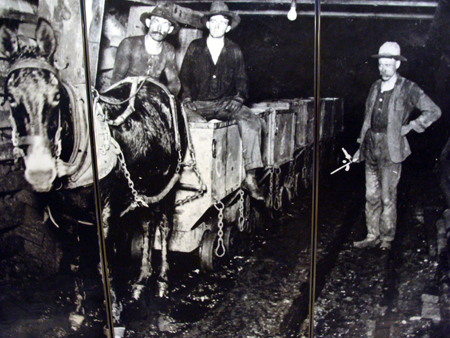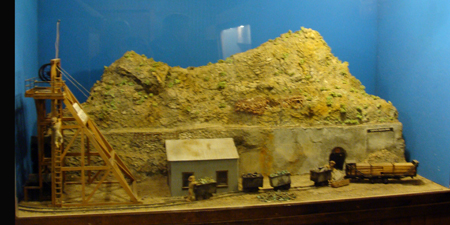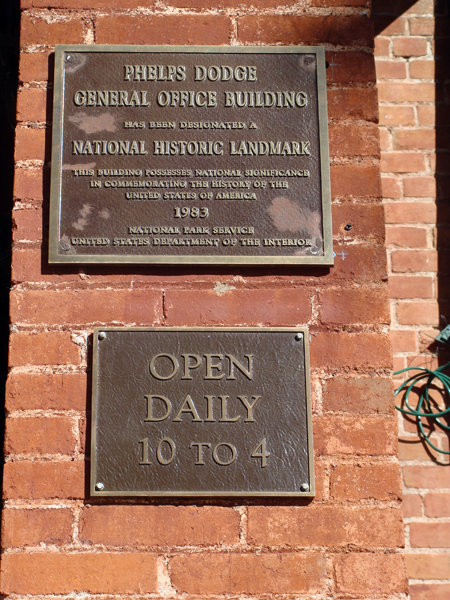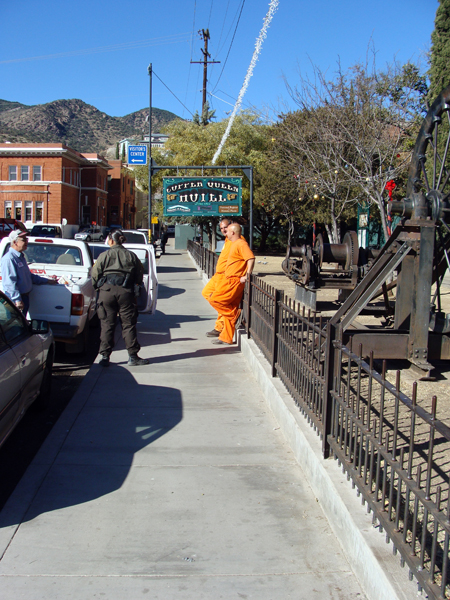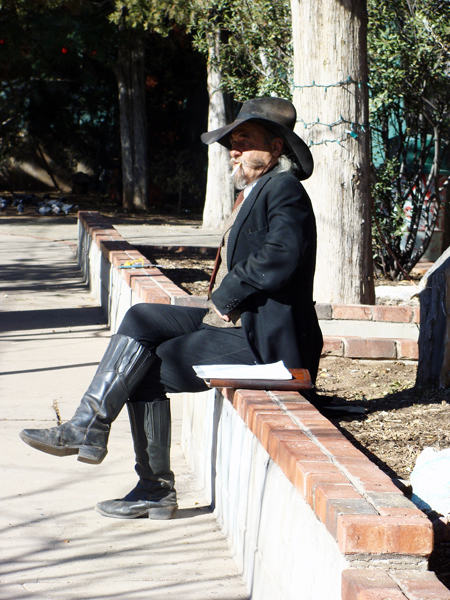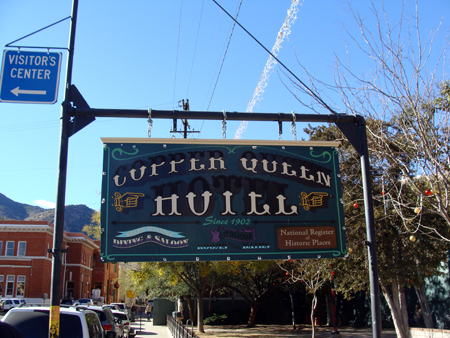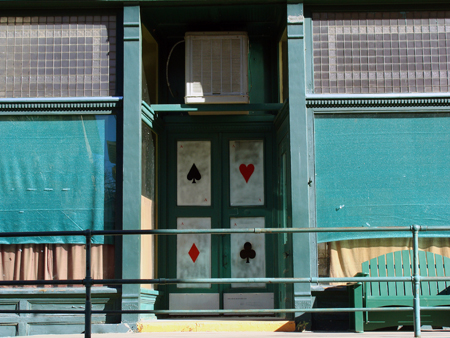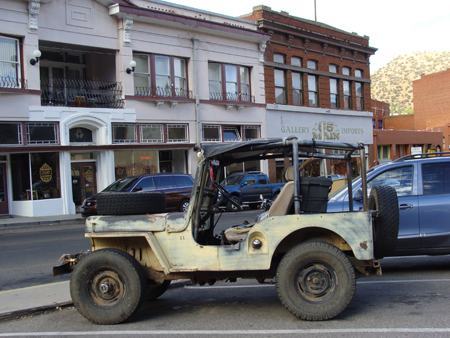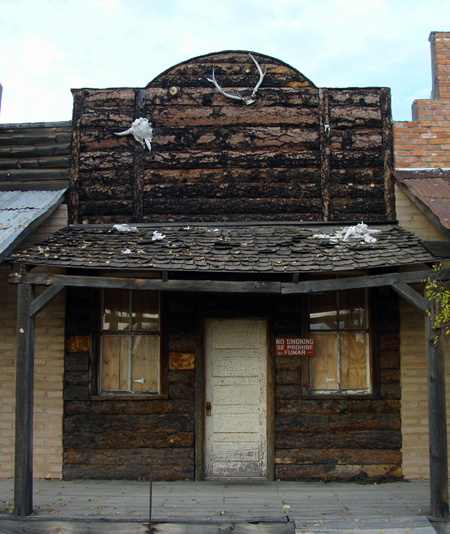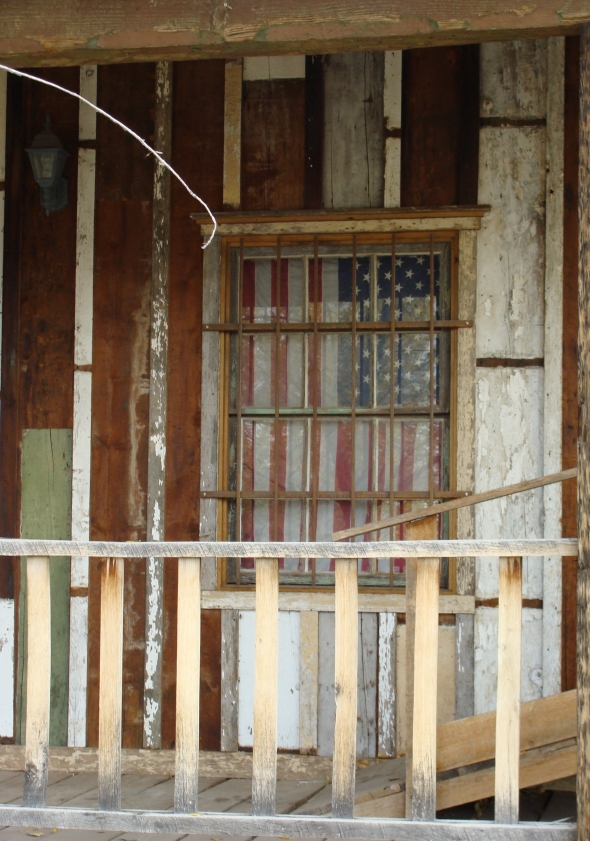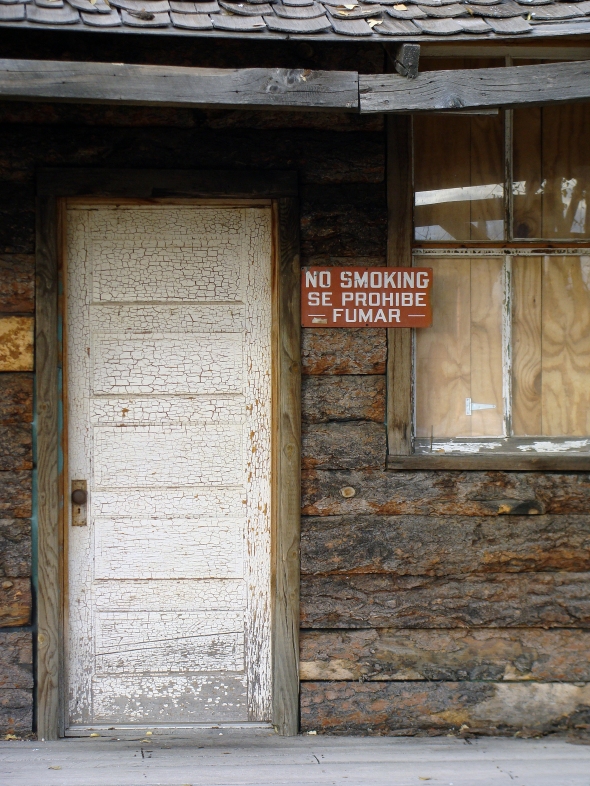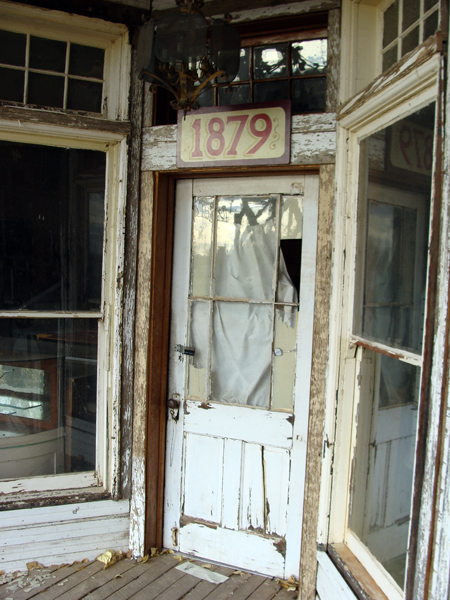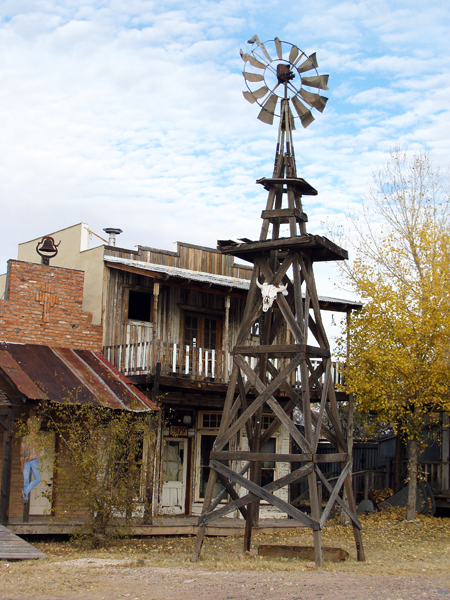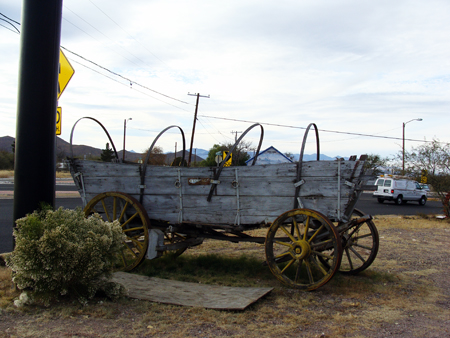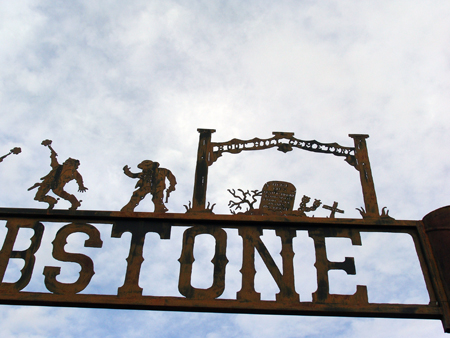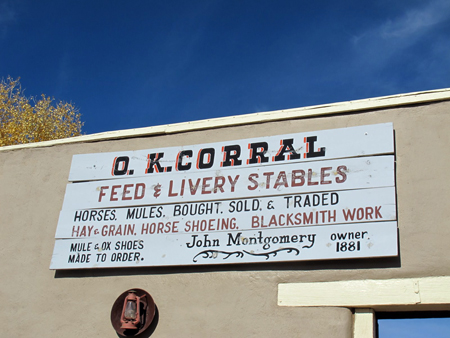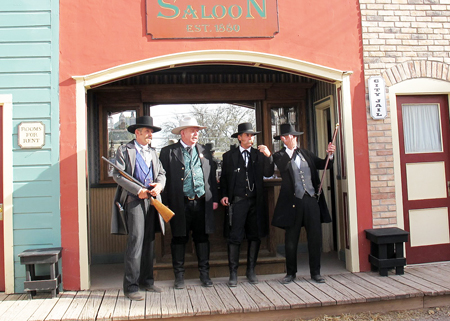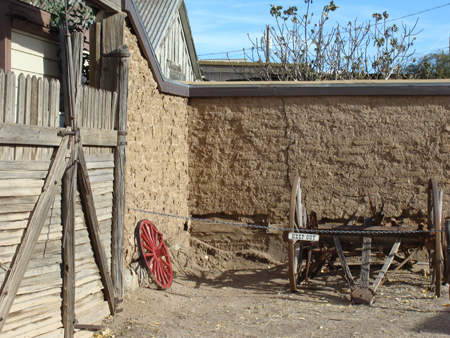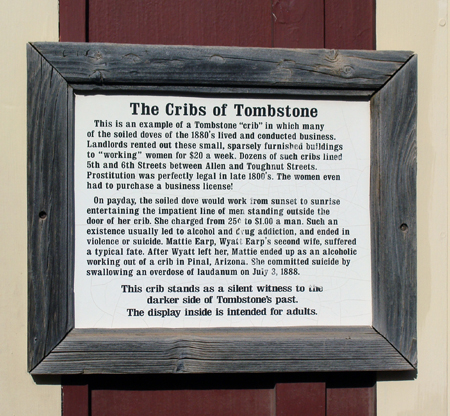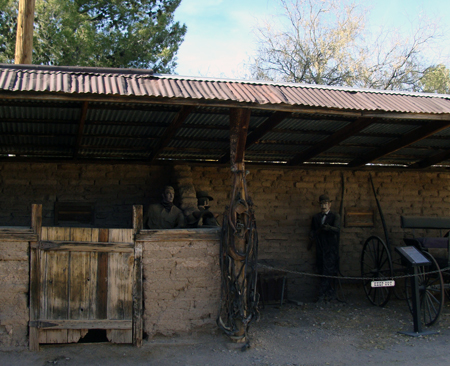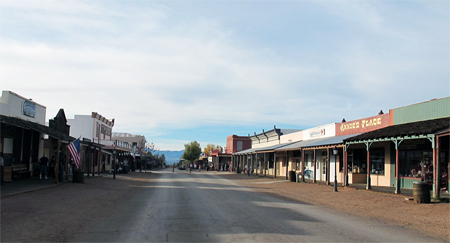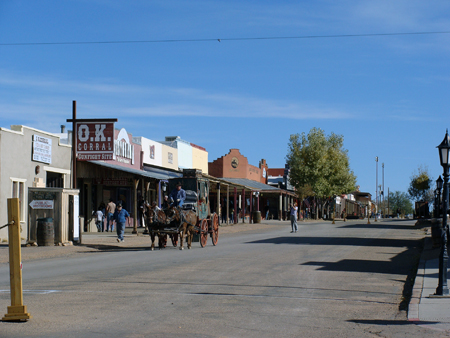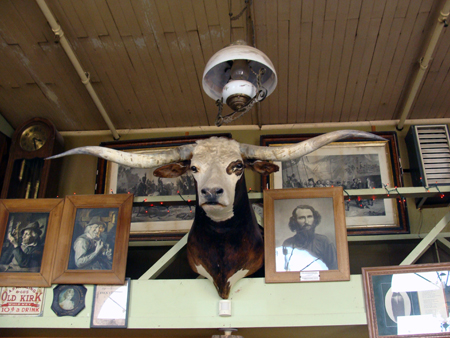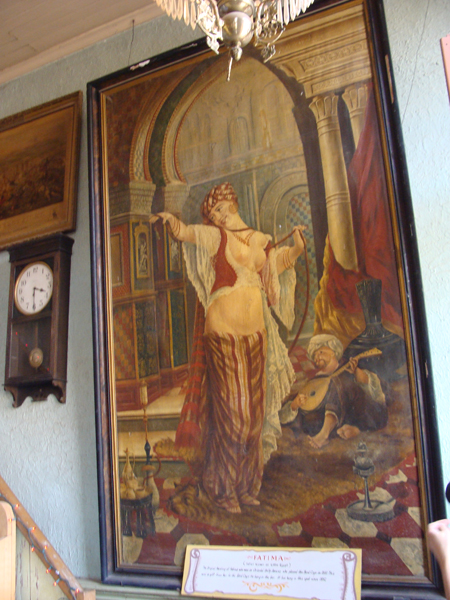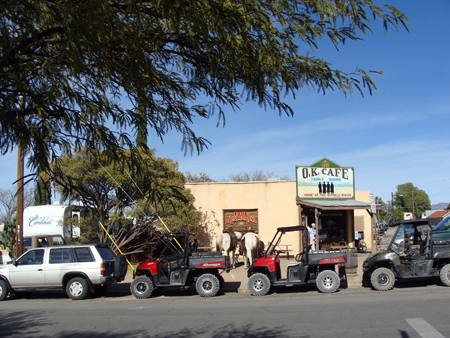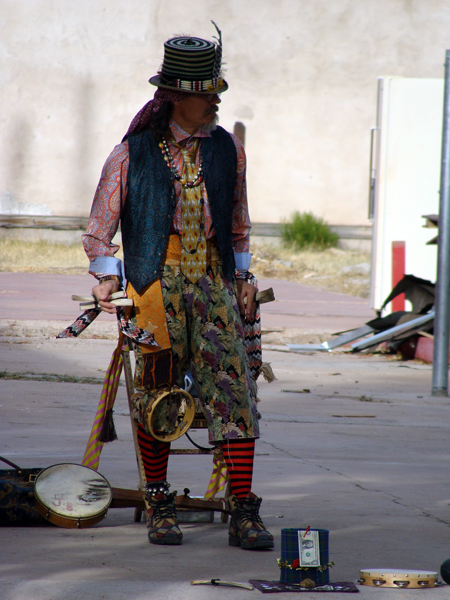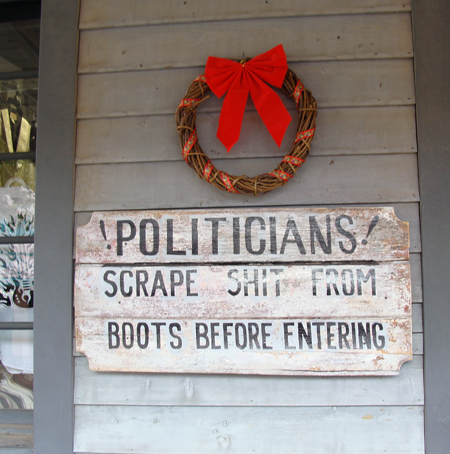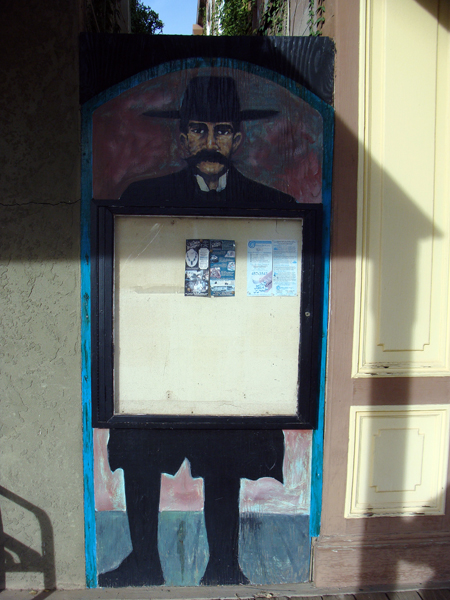DOWN BELOW-THE QUEEN MINE
Our last adventure in Bisbee was to take the tour down into the old Queen Mine, once an important part of the thriving mining industry that gave the entire town its reason to exist.
The first thing we do is get outfitted for damp conditions-and, perhaps, falling rocks!
Pete, our guide into the mine, is a former miner with the most amazing information about the life of the men who risked their lives daily down in the mines. We learned about how to set explosives, among other things, how the men needed to rely on each other, and the dangers of not doing so.
With our jackets and helmets on we boarded the train down the track deep into the mine. The temperature remains fairly constant in the mid-forties farenheit.
Pete showed us “the facilities” used by the men down in the mine.
Riding back up to the surface we saw this sign, lit as was all in the mine, by small lamps powered by battery packs as part of our equipment to go down into the pitch black mine. At one point we all turned off our lamps to experience what “true darkness” is. Only a cell phone light appeared in the utter black down there.
Up above ground once more we visited the gift shop. One of the signs showed this old photo of the early days of the Queen Mine before “modern technology”.
This diorama gave an explanation of the process of working in the mines.
As we left Bisbee and headed back to Tucson we still had a few more opportunities for photos.
THE EARP HOUSE IN TOMBSTONE
One of the most legendary names in the history of the American West is that of the Earps. These brothers, of whom Wyatt is the best known, lived for a time in the tiny town of Tombstone, in what was then Arizona Territory.
Surviving today is the simple, 14 x 27 foot house, now restored, The Earp House and Gallery, which gives an idea of how small indeed were the first homes of settlers in the West. It is filled with memorabilia about Wyatt’s personal life as well as the events at the O.K. Corral, site of the infamous “Gunfight At the O.K. Corral” , now a part of Western myth and legend.
A sculpture of Earp stands near the little house, and not too far (nothing is “too far” in this little town, population today of about 1,500 people.) from a small section of old houses which seem to be in the process of being restored also.
This is the edge of town, and here I found some wonderful opportunities for images.
Directly in front of these weathered houses is a structure common to farms and ranches across the country, the windmill. This glorious old windmill has an ornament that speaks of the history of its location!
Tombstone’s Cowboy Church seems to provide entertainment along with spiritual comfort.
Very near here is a wonderful rusty iron “gate” marking the entrance or departure one takes to get back onto the highway out of town. And very near this, an old wagon contrasts with the sleek whiteness of a modern 21st Century vehicle heading down the road out of town.
But there is one more amazing place to visit before heading out for Bisbee~the famous resting place for not only gunfighters but others who all too often met untimely ends and now lay beneath the rockpiles of Boot Hill.
GUNFIGHT AT THE O.K. CORRAL
A shoot-out in a narrow alley in Tombstone, Arizona Territory, now known as “The Gunfight At The O.K. Corral”, became etched in the lore of the American West on October 26, 1881.
The names of Earp, Clanton, and McLaury, and Doc Holliday were added to the pages of a history that has been re-visited countless times in literature and Hollywood movies. In less than a minute three men were killed and three more wounded. Every second of the “thirty seconds and thirty bullets” has been studied and documented by historians and aficionados, but what remains is a picture of a small outpost where the rule of law was in its infancy and the gun was the prevailing “equalizer”.
The current citizens of Tombstone do their best to take the visitor back to that fateful day. In what is clearly a community effort, that famous gunfight is re-enacted in a little outdoor theater. We were invited to step back into time to that autumn day.
The performance takes place daily and is reached by walking through from Tombstone’s main street into a shop area where not only can one purchase tourist items but can also view some interesting artifacts from the period. My favorite was an appropriate vehicle for the day, a large black hearse.
Along the short walk from the shop to the entrance of the theater the visitor can find other interesting aspects of daily life of Tombstone in the 1880’s. Life was particularly hard for women in this place and especially so for those who faced life on their own.
As we left the performance and walked back through the shop, we passed a blacksmith working in the old smithy.
Back on the main street we headed to The Four Deuces Saloon for a refreshing beverage.
I wasn’t quick enough to catch photos of the leather-clad group that occupied this rather small establishment but did manage to get a photo of a local as he left the saloon. As we sat at the bar in this little establishment we chatted with other patrons on either side. To our left was a older couple from England, suntanned and dressed very appropriately in Western garb. It turns out that they live most of the year near Tombstone, where they can have horses, and from time to time go back to England to visit their family. On our right was a middle-aged fellow who told us that he lived in Tombstone but worked in Tucson at Raytheon, where, he advised, most of the missiles produced in the U.S. are designed and produced. Our bartender and the proprietress arrived in Tombstone from San Diego. All seemed to have found their place in this off-the-beaten path town of Tombstone.
The next post will take us to the Earp house and then to the most famous “resting place” in the West, “Boot Hill”.
“The Town Too Tough To Die”
We continued our trip to Arizona, leaving Tucson and heading south to Bisbee. As we drove the roughly hundred miles we stopped about halfway at the famous town Tombstone, “The Town Too Tough To Die”.
Tombstone, Arizona is aptly named! It conjures up visions of gunfights, old saloons, cowboys, stagecoaches, and wild landscapes. Even a hundred or so years later Tombstone manages to keep up the old stories and has done its best to remind visitors how life must have been in the days of early Arizona history.
This is the main street of Tombstone where life goes on in the 21st Century by preserving the bits of the 19th that remain. One is The Bird Cage Theatre. Here our guide, appropriately-dressed to recall the ladies who worked in this saloon told tales of the famous and infamous and of the shoot-outs and events of this saloon while pointing out some of the more than one hundred bullet holes in the building.
These stairs lead to the “cribs”, where the ladies who worked the upstairs brothel entertained their guests.
Below, a poster of the famed performer Fatima at the foot of the stairs with the visible bullet holes of a shoot-out.
On the bar rests a photograph taken of a ghost sighting in The Bird Cage.
Tombstone is home to a variety of citizens who find work and relaxation in town.
Walking the wooden sidewalks of Tombstone we found some sage advice and local advertising.
The coach waits to take visitors down the streets of Tombstone!
My next post will take us to the site of one of Tombstone’s best-known events, “The Shoot-Out At The O.K. Corral”!
